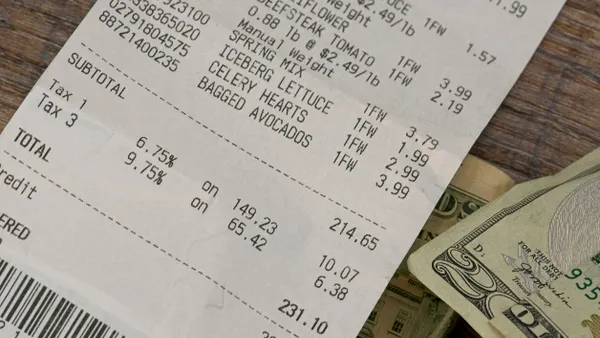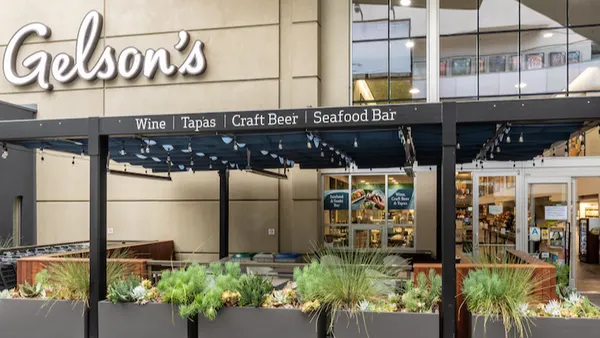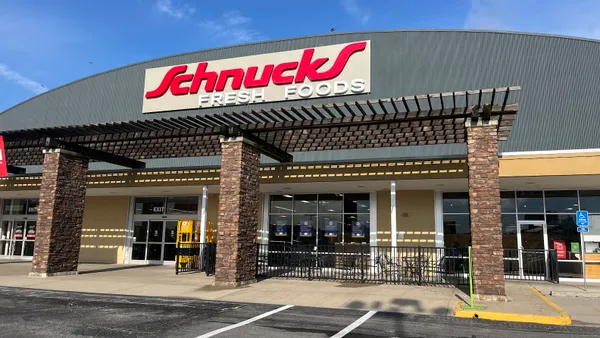Dive Brief:
- HelloFresh will no longer break even by the end of this year because of investments in growth opportunities, the company said in its latest quarterly report. The meal kit company now expects to break even by 2019. Shares dropped 4% on Monday following the news.
- Overall, the company reported earnings growth. Active customers worldwide increased by more than 40% to 1.84 million and year-over-year percentage of growth on revenue was 40%. The company’s second-quarter revenue grew globally by 48% over last year to $387.21 million. Almost half of that growth — 43% —was in the U.S., and 55% was international.
- "The strong first half of this year has proven that we can exceed our own expectations," Dominik Richter, CEO and co-founder of HelloFresh, said in the earnings report. "Our strong margins provide the necessary tailwind for systematically capitalizing on additional opportunities in the market."
Dive Insight:
HelloFresh is taking its profits and turning them into investments. The number-one meal kit provider plans to focus its growth on its Green Chef acquisition, ready-to-eat meals, price reductions, an increase in meal selections and the scaling up of a new value brand.
Earlier this year, HelloFresh acquired Green Chef, a meal kit company focused on organic, vegan, gluten-free, paleo, and keto-friendly meals. Green Chef was expected to contribute $15 million in quarterly revenue and improve HelloFresh’s operations and logistics. But most of all, the company would help HelloFresh expand its footprint by offering more curated choices like regional cuisines and meals focused on special diets like paleo and gluten-free. As more grocers and meal kit providers enter this extremely competitive industry, offering more choices will give HelloFresh an edge up above other meal kit providers.
During the second quarter, the company has seen an influx in active customers, number of orders and meals delivered. But just like most meal kit companies, HelloFresh is struggling to retain customers amid high marketing and operation costs. The meal kit provider reported it is working towards price reductions, which could lead to more business — a tactic used by its competitor Blue Apron, which reduced prices by 30% before going to Costco. If customers are dropping their HelloFresh subscriptions due to high costs, this could help the company’s retention rates and lower its high customer acquisition costs.
However, if customers desire an even further discounted meal kit, HelloFresh has options for those consumers as well. The company recently launched its EveryPlate brand which offers customers meal kits starting at $15 for 3 recipes per week with two serving per meal. The recipes include simple meals like sausage linguine, chicken and rice skillet, and creamy chipotle steak.
In order to further compete with the competition, the company hinted in early July that it plans to extend into ready-made meals. The company already piloted these meals in Germany but plans to expand them to the U.S. These meals would give the company a strong foothold to compete against brands like Territory Foods, which might cut into its meal kit sales. However, HelloFresh co-founder Thomas Griesel said that if the company moves into ready-made options, the meals would only be available online and not in supermarkets.
Selling meal kits in supermarkets gives the German meal kit company an advantage over those that don’t. In June, HelloFresh announced its partnership with Ahold Delhaize to begin selling its meal kits in 600 of its Giant and Stop & Shop stores. However, several other meal kits have entered the retail space in order to reach even more consumers, while some retailers have pushed out their own meal kits. Blue Apron is selling its kits in Costco, Kroger purchased Home Chef and Albertsons acquired Plated. Meanwhile, grocers like Publix, Walmart and Kroger are getting into the business themselves.
HelloFresh is facing extreme pressure from all sides of its business, including bearish investors who point to the recent struggles of Chef'd. The meal kit company that was once thriving suddenly shut its doors and was recently picked up by a new owner. However, HelloFresh’s increase in customers, revenue and its growth efforts give the company a strong grasp on the value and premium segments. This should allow it to reach even more consumers and maintain its spot as the worldwide leader in meal kits.










